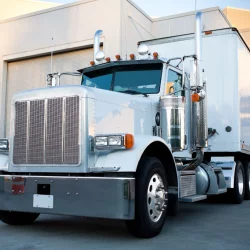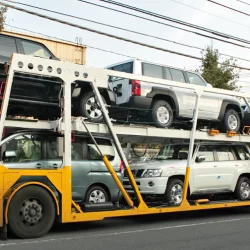How to Convert Non-Transport License to Transport License

Have you ever found yourself in a situation where you need to drive a commercial vehicle but only have a regular driver's license? Whether you're looking to change careers, expand your driving capabilities, or simply curious about the process, converting a non-transport license to a transport license is a significant step. This transformation can open up new opportunities in the transportation industry and beyond. Let's dive into the details of how you can make this transition smoothly and efficiently.
Understanding the Difference Between Non-Transport and Transport Licenses
Before we delve into the conversion process, it's crucial to understand what sets these two types of licenses apart. A non-transport license, which most of us have, allows us to drive personal vehicles for non-commercial purposes. On the other hand, a transport license permits the operation of commercial vehicles, often for business or transport-related activities.
Types of Transport Licenses
Transport licenses come in various categories, depending on the type and size of vehicle you intend to operate. The most common types include:
1. Commercial Driver's License (CDL)
2. Public Service Vehicle (PSV) License
3. Heavy Goods Vehicle (HGV) License
Each of these licenses has specific requirements and allows you to operate different types of vehicles. For instance, a CDL is typically required in the United States for driving large trucks, buses, or vehicles transporting hazardous materials.
Assessing Your Eligibility
Before you start the process of converting your license, it's essential to determine if you meet the basic eligibility criteria. While requirements may vary depending on your location and the specific type of transport license you're seeking, some common factors include:
Age Requirements
According to legal experts who are familiar with the law, most jurisdictions have a minimum age requirement for obtaining a transport license. This age can range from 18 to 21 years, depending on the type of license and the area where you'll be operating.
Driving Experience
Many transport licenses require that you have a certain amount of experience with a regular driver's license. This requirement ensures that you have a solid foundation of driving skills before taking on the responsibility of operating larger or more complex vehicles.
Physical Fitness
Operating commercial vehicles often demands physical stamina and good health. You may need to pass a medical examination to prove that you're fit to handle the rigors of commercial driving.
Clean Driving Record
A clean driving record is often a prerequisite for converting to a transport license. Serious traffic violations or a history of accidents may disqualify you or require additional steps in the conversion process.

Steps to Convert Non-Transport License to Transport License
Now that we've covered the basics, let's walk through the general steps you'll need to follow to convert your non-transport license to a transport license. Keep in mind that the exact process may vary depending on your location and the specific type of license you're pursuing.
1. Research and Choose Your License Type
The first step is to decide which type of transport license you need. This decision should be based on your career goals, the types of vehicles you want to operate, and the opportunities available in your area. Research the different license types and their requirements to make an informed choice.
2. Complete the Required Training
Most transport licenses require specialized training. This training often includes both classroom instruction and hands-on practice with the vehicles you'll be operating. Look for accredited training programs in your area that offer comprehensive courses for the license type you're pursuing.
During your training, you'll learn about:
- Vehicle operation and maintenance
- Traffic laws and regulations specific to commercial vehicles
- Safety procedures and protocols
- Logbook keeping and other administrative tasks
3. Study for the Written Exam
A written exam is typically part of the licensing process. This test assesses your knowledge of traffic laws, safety regulations, and specific information related to operating commercial vehicles. Study guides and practice tests are often available to help you prepare.
4. Pass the Skills Test
After completing your training and passing the written exam, you'll need to demonstrate your practical skills. This test usually involves operating the type of vehicle your license will cover. You'll be assessed on your ability to perform pre-trip inspections, basic vehicle control, and safe driving practices.
5. Submit Your Application
Once you've completed the training and passed all required tests, you'll need to submit an application to your local licensing authority. This application typically includes:
- Proof of identity and residency
- Your current non-transport license
- Certificates of completion for your training
- Results of your written and skills tests
- Medical certificate (if required)
- Application fee
6. Obtain Additional Endorsements (If Necessary)
Depending on your career goals, you may need to obtain additional endorsements on your new transport license. These endorsements allow you to operate specific types of vehicles or transport certain types of cargo. Common endorsements include:
- Passenger transport
- Hazardous materials
- Tank vehicles
- Double/triple trailers
Each endorsement may require additional testing and fees.

Maintaining Your New Transport License
Congratulations! You've successfully converted your non-transport license to a transport license. However, the journey doesn't end here. Maintaining your new license requires ongoing effort and responsibility.
Regular Renewals
Transport licenses typically need to be renewed more frequently than regular driver's licenses. Stay on top of your renewal dates to ensure your license remains valid.
Continuing Education
The transportation industry is constantly evolving, with new regulations and technologies emerging regularly. Many jurisdictions require ongoing education or refresher courses to maintain your license. These courses help you stay up-to-date with the latest safety practices and industry standards.
Medical Certifications
Depending on the type of transport license you hold, you may need to undergo regular medical examinations to ensure you remain fit to operate commercial vehicles safely.
Clean Driving Record
Maintaining a clean driving record is crucial for keeping your transport license. Traffic violations or accidents can result in the suspension or revocation of your license, potentially impacting your career.
Career Opportunities with a Transport License
Now that you've converted your license, a world of new career opportunities opens up. Some exciting paths you might consider include:
- Long-haul truck driver
- Bus or coach driver
- Delivery service driver
- Construction equipment operator
- Emergency vehicle driver
Each of these careers offers unique challenges and rewards, allowing you to put your new skills and license to good use.
Challenges and Considerations
While converting your license can lead to exciting opportunities, it's important to be aware of the challenges that come with operating commercial vehicles:
Long Hours and Time Away from Home
Many transport jobs involve long hours on the road and extended periods away from home. This lifestyle can be challenging for some individuals and their families.
Physical Demands
Operating large vehicles and handling cargo can be physically demanding. It's important to maintain your health and fitness to meet the challenges of the job.
Continuous Learning
The transportation industry is always evolving, with new technologies and regulations emerging regularly. Be prepared for ongoing learning and adaptation throughout your career.
Responsibility and Safety
As a commercial driver, you'll be responsible not only for your own safety but also for the safety of your cargo and other road users. This responsibility can be both rewarding and stressful.
Conclusion
Converting your non-transport license to a transport license is a significant step that can open up new career paths and opportunities. While the process may seem daunting at first, breaking it down into manageable steps makes it much more achievable. Remember, the key to success lies in thorough preparation, dedicated training, and a commitment to safety and professionalism.
Whether you're looking to change careers, expand your skill set, or simply explore new horizons, obtaining a transport license can be a rewarding journey. With the right mindset and preparation, you'll be well on your way to joining the ranks of professional drivers who keep our world moving.
So, are you ready to take the wheel and steer your career in an exciting new direction? The road ahead is full of possibilities – it's time to shift gears and embrace the challenge of becoming a licensed transport driver!
More to Read:
Previous Posts:


